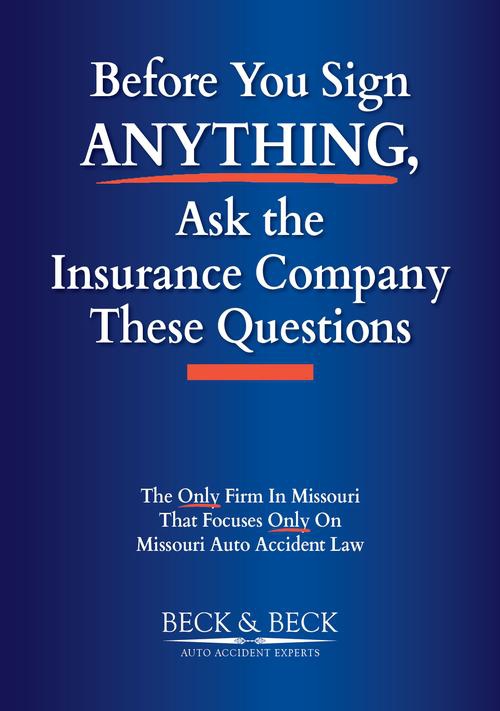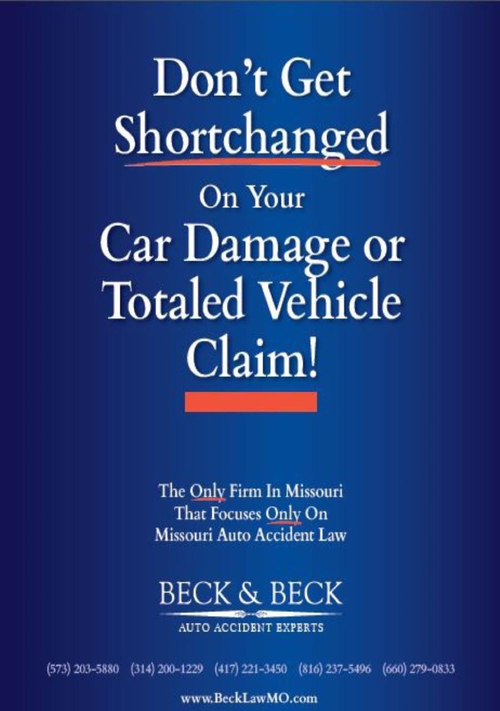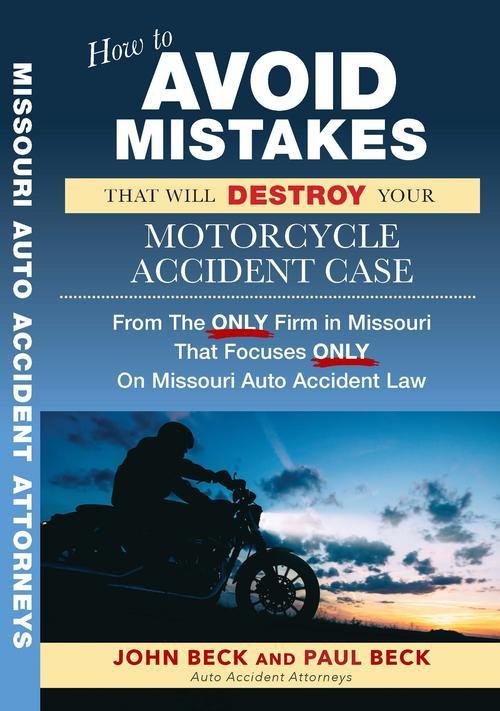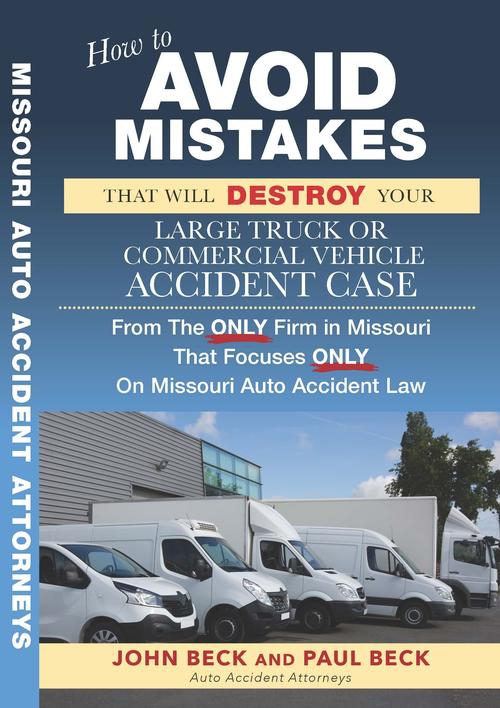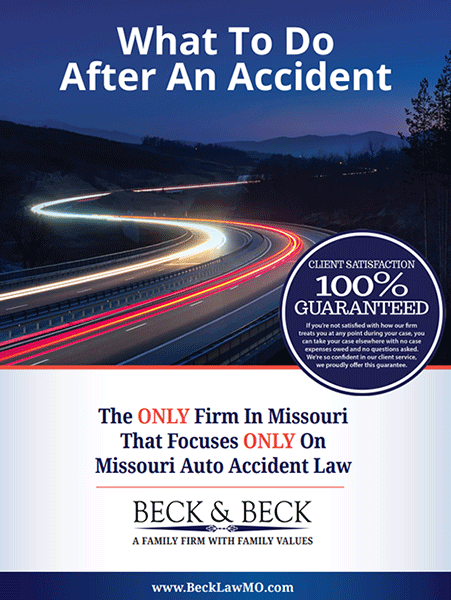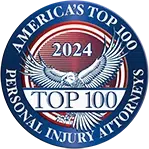According to a table of crashes linked to contributing circumstances prepared by the Missouri State Highway Patrol, vehicle defects caused about 1.1% of traffic injuries and 0.6% of traffic deaths in 2023. These defects included faulty brakes, defective tires, and car tire lugnuts falling off.
Lugnut issues might seem rare, but they can happen, particularly after a dealer or repair shop works on your car. Tire rotations and installations, brake work, and other maintenance and repair jobs require technicians to remove your vehicle’s wheels.
If the lugnuts aren’t properly tightened afterward, your tires could come off unexpectedly, causing you to lose control of your vehicle or even collide with other drivers or objects. These crashes can cause serious car accident injuries since you can’t steer or brake with a wheel missing.
In this article by top rated St. Louis car accident lawyers Beck & Beck Missouri Car Accident Lawyers, we discuss how tire lugnuts fall off, who is responsible if they do, and how to proceed if you’ve been injured in a car accident because your wheel fell off or another driver’s wheel came off.
How Loose Lugnuts Can Cause a Car Tire to Fall Off
Your vehicle’s tires are mounted on wheels or rims that contain several holes arranged in a symmetrical pattern. The wheel is secured to the hub by aligning the holes with the threaded studs or “lugs” attached to it.
The wheel can then be fastened to the hub by threading lugnuts onto the lugs. The vehicle moves by transferring the rotational motion of the hub to the wheels and tires.
Every auto manufacturer prescribes a specific torque for their lugnuts. This number represents the force used to fully tighten them to hold the wheel to the hub without damaging the lugs or lugnuts. When auto technicians fail to properly torque your lugnuts during reinstallation, they can come loose.
Worse yet, over-tightened lugnuts can also be dangerous. When a mechanic tightens the lugnuts too much, the excessive strain can damage the lugs or lugnuts, causing the material to crack or stretch. For this reason, over-tightening can be as dangerous as under-tightening.
Even one loose or damaged lugnut creates an extreme level of risk. The wheel can wobble, stressing and weakening the remaining lugnuts or lugs. If they fail, the wheel can come off entirely.
Who Is Responsible for an Accident Where a Wheel Fell Off?
Liability for car crashes is usually determined using the principles of negligence law. Negligence occurs when someone fails to exercise reasonable care.
Every crash involving car tire lugnuts falling off is unique. However, the liability typically falls on one of three parties:
The Mechanic
Repair garages, car dealers, and tire shops must perform reasonably competent repairs. When a crash happens due to preventable errors or carelessness, they can be held responsible for the victims’ losses.
Manufacturers publish the proper torques for their vehicles’ lugnuts. A prudent mechanic will check these specifications and set their tools to tighten the lugnuts to the correct torque.
When a mechanic over- or under-torques the lugnuts, they commit an avoidable error, and a crash is the foreseeable result. These are critically important elements when proving negligence.
The Manufacturer
While injured parties can bring negligence claims against manufacturers, the law also gives them an easier path.
Manufacturers are strictly liable for injuries caused by defective products. A victim’s personal injury lawyer doesn’t need to prove that the manufacturer failed to exercise reasonable care — they must only show that the product was defective when it left the manufacturer and that the defect directly led to the injury.
Defects can fall under the following three categories:
- Design
- Manufacturing
- Warnings or instructions
For example, a design defect might arise when an auto manufacturer designs a vehicle with a four-lug pattern on the hub, but it needs at least five lugs to carry the weight.
A manufacturing defect could occur if a manufacturer designs a vehicle properly, but the factory uses the wrong type of steel, making the lugnuts prone to cracking.
Lastly, a vehicle might have a defect in its warnings or instructions if the manufacturer mistakenly publishes the wrong torque specifications in the owner’s manual.
The Driver or Owner
A vehicle owner or driver might also bear the liability for a crash in which the lugnuts fall off.
Perhaps the lugnuts are visibly corroded, and the owner ignores their mechanic’s warnings to replace them. Or maybe the vehicle has a noticeable wobble at low speeds, suggesting that it’s unsafe to drive. If the owner or driver unreasonably ignores these issues, they may be liable when the equipment fails and they crash into another driver.
Comparative Fault Laws in Missouri
Missouri law includes a comparative fault rule, meaning each party who contributes to an accident is assigned a percentage of the blame. This legal doctrine can apply in a few different situations.
Let’s say you’re driving your car when a wheel falls off. As a result, you lose control of the vehicle and crash into another car. You blame the manufacturer because it produced defective lugnuts that it later recalled. However, you didn’t respond to the recall notice and have them replaced as recommended.
In this situation, the victims in the car you hit could sue you and the manufacturer. Under Missouri law, a jury could assign most of the fault to the manufacturer but also blame you for continuing to drive a vehicle you knew to be unsafe. Each of you would have to compensate the victims in proportion to your percentage of liability.
As another example, imagine that your car loses a wheel and rolls over. While you’re fortunate enough to avoid hitting any other vehicles, you suffer catastrophic injuries in the crash.
You sue the dealer for negligently under-tightening the lugnuts after rotating your tires. The dealer responds by blaming you for failing to bring the vehicle back after you noticed a wobble.
In this case, a jury might ascribe the bulk of the fault to the dealer. However, it may agree that you acted negligently by failing to have the unusual wobble checked. The court would reduce your compensation in proportion to your share of the blame. Thus, if you were 15% liable, you could still recover compensation for 85% of your losses.
How Beck & Beck Missouri Car Accident Lawyers Can Help You
After being injured in a crash caused by car tire lugnuts falling off, you could face significant medical costs and lost wages. A St. Louis personal injury attorney can help you pursue compensation for these and other losses by providing the following services:
- Offering a free initial case review to identify possible legal claims
- Preparing an insurance claim by gathering evidence and filing paperwork
- Negotiating with insurers to overcome denials and attempt to settle the case
- Litigating against the at-fault party if a settlement can’t be reached
Crashes involving equipment failures are often more complicated than typical car accidents. You may need an engineer to test the lugnuts or analyze the lugs to determine why they failed and provide expert testimony in your case. A qualified lawyer will have connections with experts who can testify to such defects.
The other party’s insurer may challenge certain aspects of your case. Your attorney can push back aggressively against the insurer and seek a fair settlement so you can focus on recovering from your injuries.
If a lawsuit becomes necessary, your lawyer will understand the relevant regulations and court procedures. They can prepare and file your lawsuit to pursue a fair and just outcome in your case.
Contact Our Top Rated Auto Accident Attorneys Today!
The skilled attorneys at Beck & Beck Missouri Car Accident Lawyers have decades of experience fighting for car accident victims in Missouri.
Our team has handled thousands of cases over the years, obtaining life-changing compensation for crash victims. We’re committed to helping our clients overcome the difficulties they face after getting injured due to someone else’s actions.
Contact us today to learn more about how we can help you file for compensation for your injury-related losses.

